
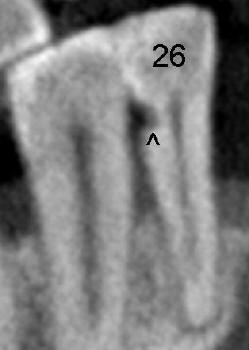
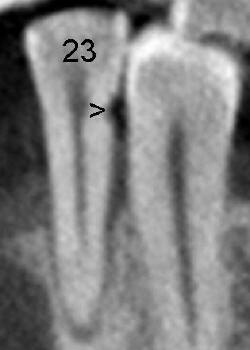
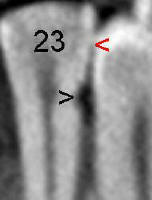
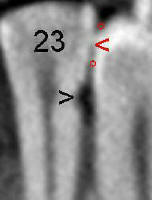
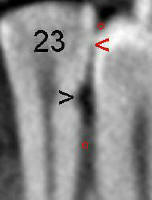
 |
||
| Fig.1 | ||
 |
|
 |
| Fig.2 | Fig.3 | Fig.4 |
 |
 |
 |
| Fig.5 | Fig.6 | Fig.7 |
Dental Education Lecture: Total Home Care
Fig.1 shows the lower teeth of Mr. Hou. Does he keep his teeth nice and clean? Yes, but skin deep. He lost two front teeth (between the teeth #23 and 26) by accident twenty years ago. Recently he had another accident. The teeth #23 and 26 are loose, need to be taken out and replaced by implants. Before extraction, we take CT. The latter shows that there are cavities in these teeth (Fig.2,4 arrowheads). The cavities are confirmed when the teeth are out (Fig.3).
It appears that Mr. Hou is not our good patient today. Do you know why?
He does not floss. What should we do in order to prevent cavities between the teeth? Let us return to Fig.4 and blow it up as shown in Fig.5. Red arrowhead points to the contact area between the teeth, whereas the black arrowhead indicates cavity. Most of us feel it difficult to pass the contact point with floss. It must be a great accomplishment to just pass it (between two red circles in Fig.6), but it is far from enough. As you may see, the cavity (black arrowhead) is deeper than the area that floss can reach. To have total home care, not only should we use floss, but also floss deeper than we think (well past the area easy to have cavity, between two red circles in Fig.7). Please learn how to floss in detail.
Xin Wei, DDS, PhD, MS 1st edition 01/10/2011, last revision 01/10/2011